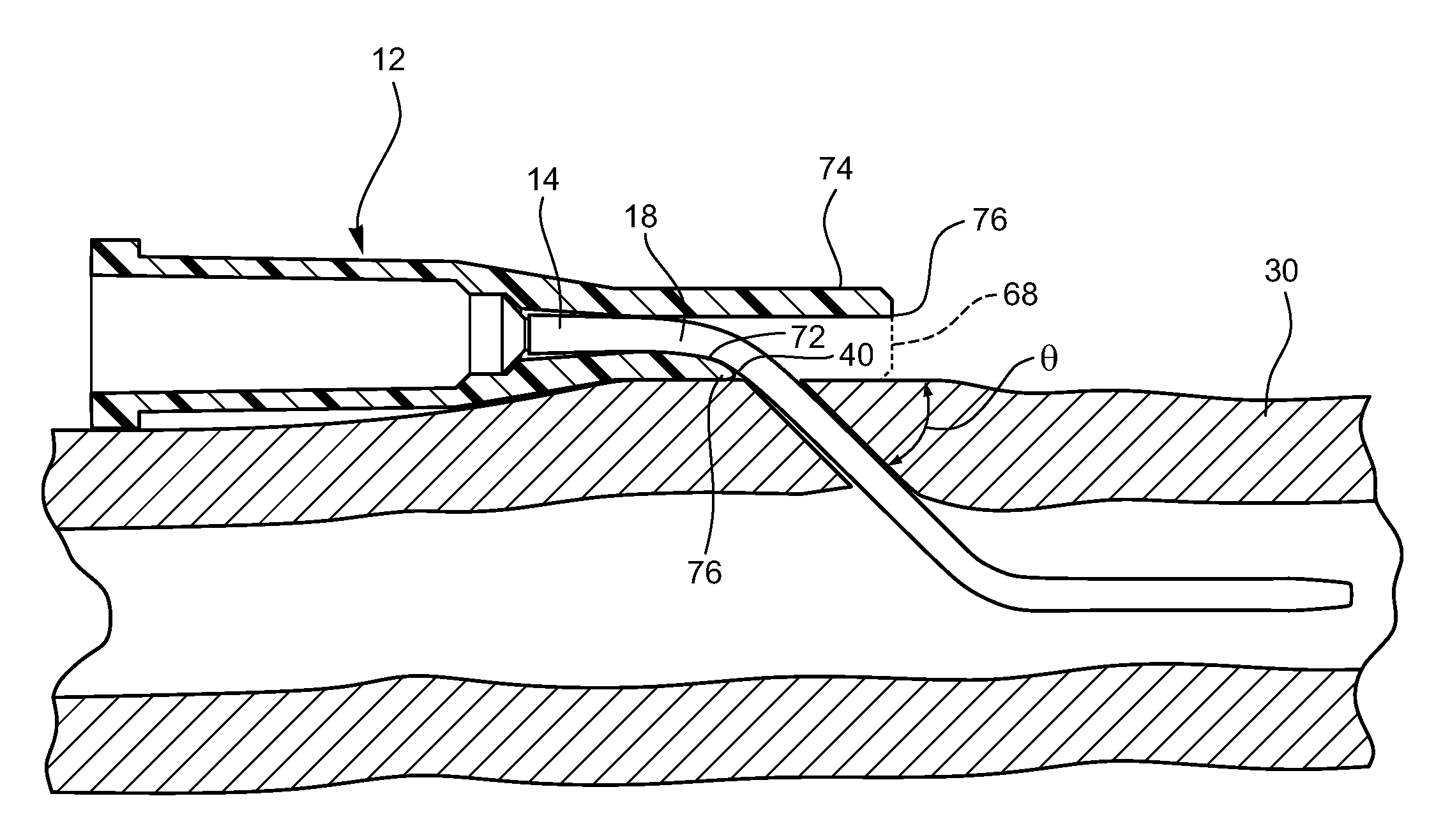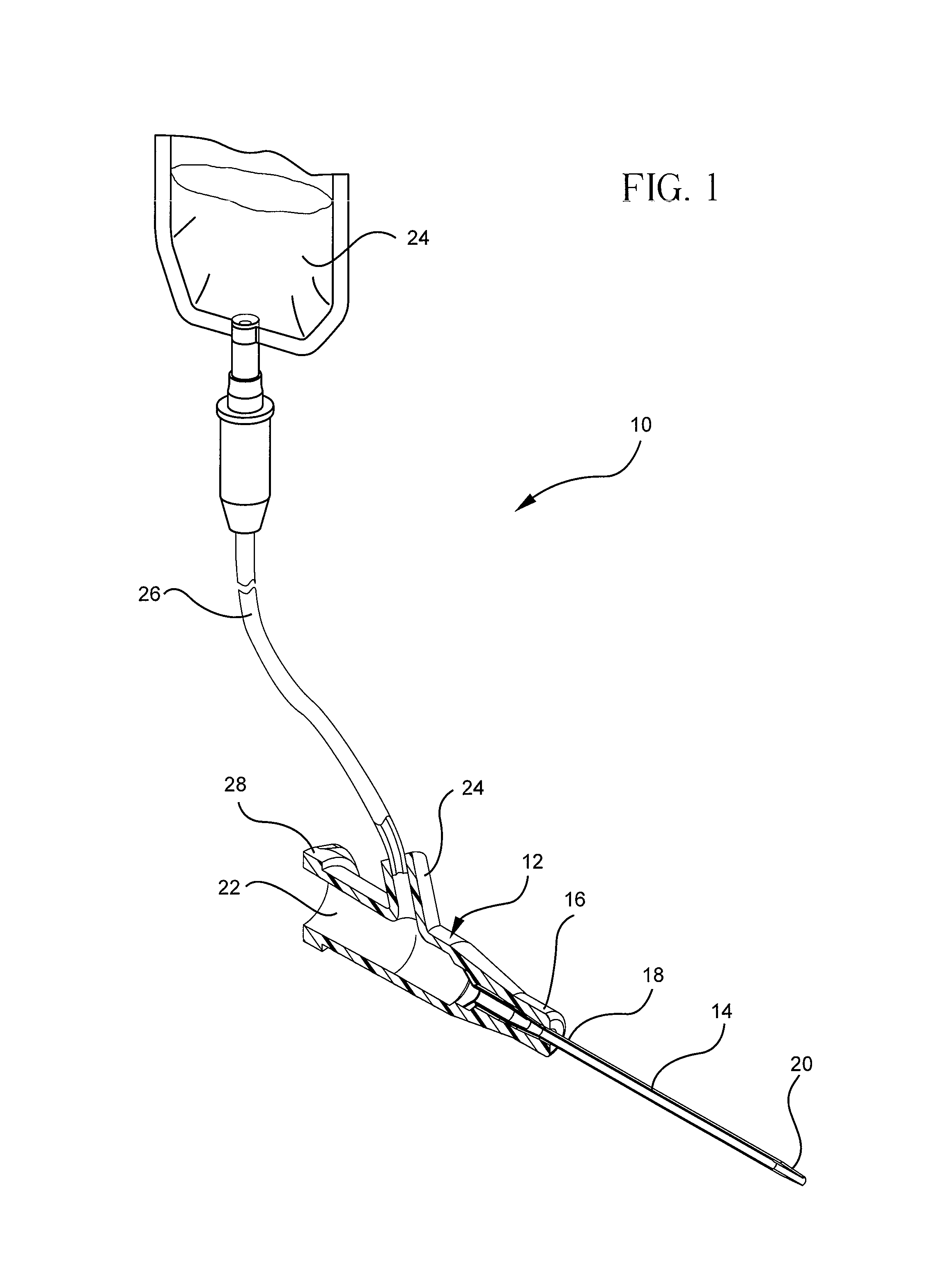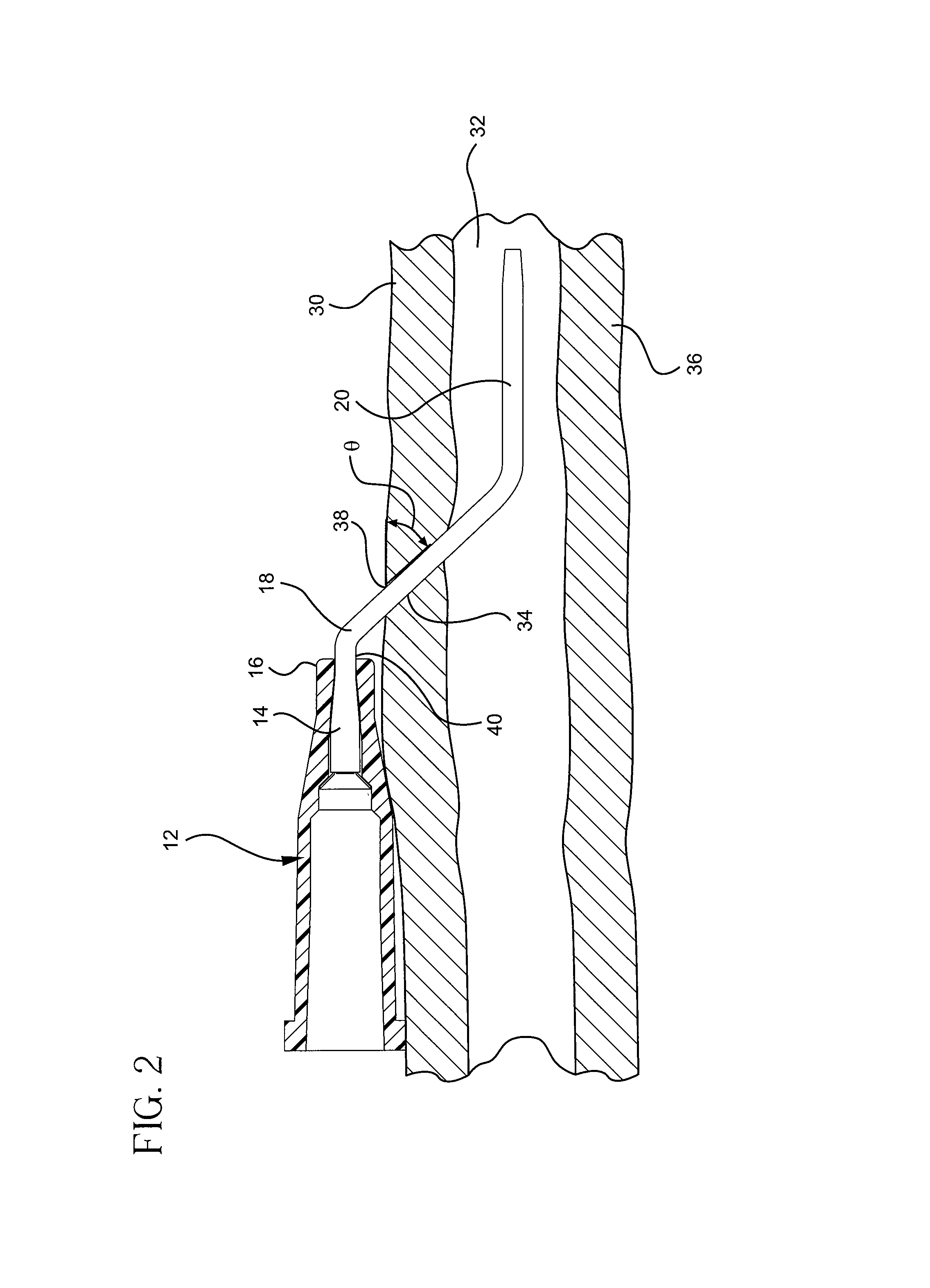Occlusion resistant catheters
a catheter and occlusion technology, applied in the field of vascular access devices for intravenous catheters, can solve the problems of inability to occlusion, unfavorable catheter arching, and inability to occlusion, so as to prevent occlusion and/or restriction of flow, prevent occlusion, and minimize contamination of exposed catheters.
- Summary
- Abstract
- Description
- Claims
- Application Information
AI Technical Summary
Benefits of technology
Problems solved by technology
Method used
Image
Examples
first embodiment
[0047]Referring now to FIG. 3a, an occlusion resistant catheter adapter is illustrated. In this embodiment, the catheter adapter tip opening 50 is chamfered such that the tolerance between the first end 16 of the catheter adapter 12 and the flexured portion 18 of the catheter is increased. Thus, the flexured portion 18 of the catheter 14 may bend more sharply before the catheter root 40 contacts the catheter adapter tip opening 50 resulting in an occlusion. In one embodiment, the catheter adapter tip opening 50 is chamfered at an angle θ′ which is less than 90° relative to the generally horizontal plane 52. The chamfered opening 50 permits a greater length of catheter 14 to be inserted before an occlusion occurs due to the delayed contact of the tip opening 50 and the catheter root 40. Therefore, as the flexured portion 18 of the catheter 14 is further inserted into the patient 30, the flexured portion 18 is allowed to bend to a greater degree before contacting and pivoting on the t...
second embodiment
[0049]Referring now to FIG. 4a, an occlusion resistant catheter adapter is illustrated wherein the catheter adapter tip opening 60 is stepped such that the upper portion 64 of the opening 60 extends outwardly further than the bottom portion 62 of the opening 60. In this embodiment, the catheter 14 extends beyond the bottom portion 62 of the opening 60, the catheter 14 comprising a flexured portion 18 that is unsupported by the catheter adapter 12. Thus the flexured portion 18 may bend towards the patient 30 to maintain an optimal angle of insertion θ, within the desired range. The upper portion 64 of the opening 60 is extended such that the upper portion 64 provides a shielding function. The uninserted portion of the flexured portion 18 is shielded by the overhanging upper portion 64. The overhanging upper portion 64 is configured to extend beyond the insertion site 38 thus providing a barrier 68 for the uninserted portion of the flexured portion 18. As configured, the current embod...
PUM
 Login to View More
Login to View More Abstract
Description
Claims
Application Information
 Login to View More
Login to View More - R&D
- Intellectual Property
- Life Sciences
- Materials
- Tech Scout
- Unparalleled Data Quality
- Higher Quality Content
- 60% Fewer Hallucinations
Browse by: Latest US Patents, China's latest patents, Technical Efficacy Thesaurus, Application Domain, Technology Topic, Popular Technical Reports.
© 2025 PatSnap. All rights reserved.Legal|Privacy policy|Modern Slavery Act Transparency Statement|Sitemap|About US| Contact US: help@patsnap.com



